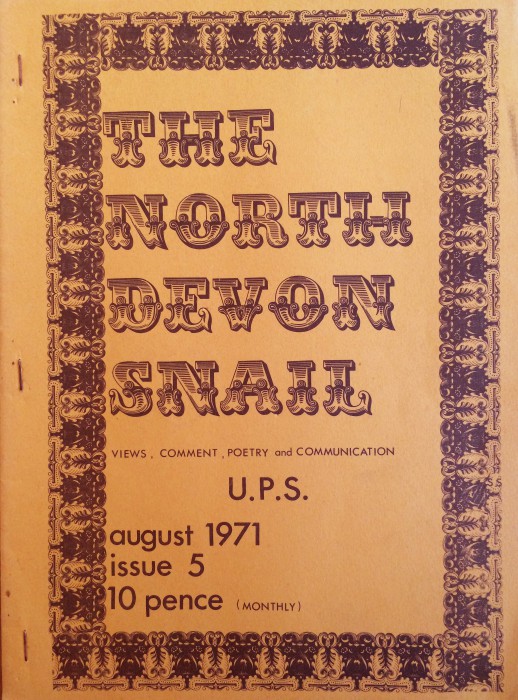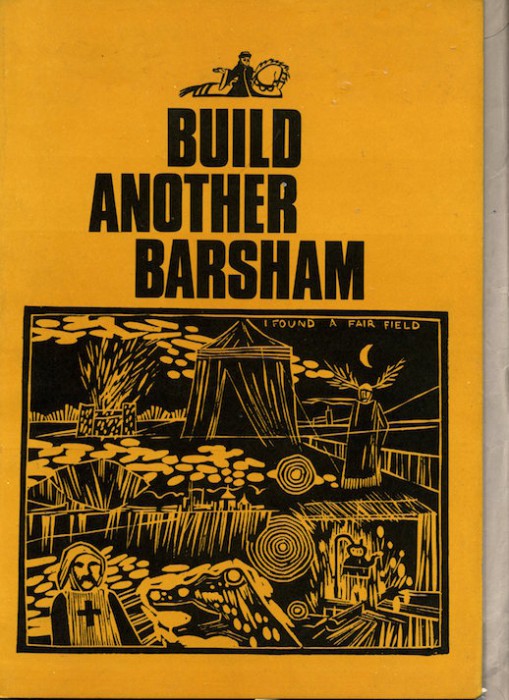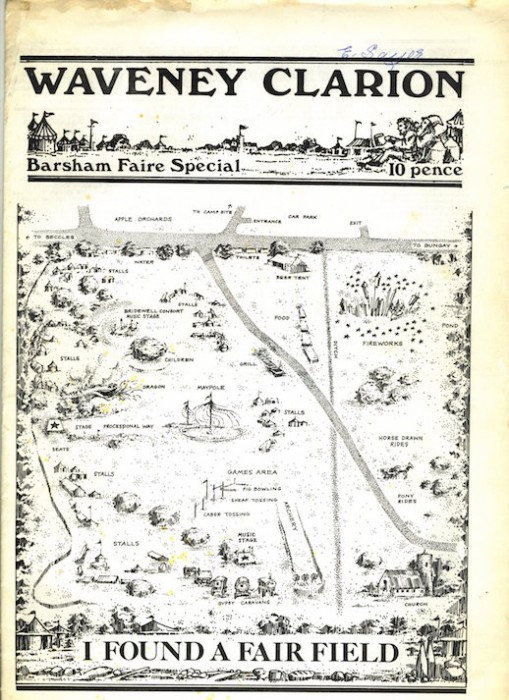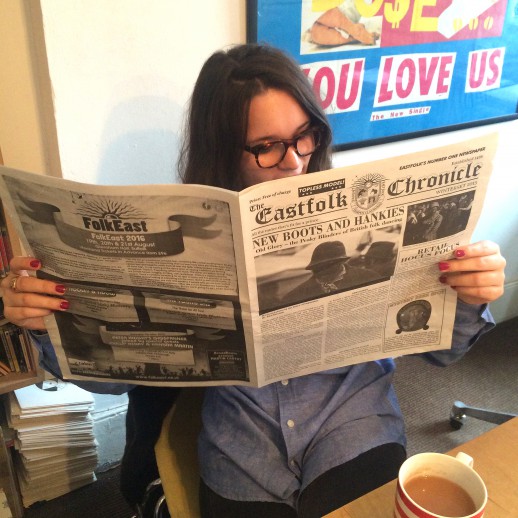Discovering the existence of Bernard Schofied and Andy Pittaway’s Country Bizarre magazine some years ago opened up a whole new world of wyrd. It appeared that once upon a time, with Richard Mabey as their guide and Food For Free as their bible, there had been an entire universe of green-minded dropouts who shared news and alt.lifestyle tips via the pages of self-funded private press newspapers – with names such as The North Devon Snail, The Waveney Clarion and indeed The Country Bizarre. Obviously I set up Google searches and eBay notices for all of them but it’s taken six years to get a bite. Joy of joys I scored a North Devon Snail. It’s ok. I guess you had to be there.
Riffing from a similar song sheet comes Eastfolk Chronicle, edited by Cally Callomon, a gentleman of high taste (and even higher bicycles) whose favourite subjects include quality boot dubbin and the songs of Nick Drake. In his own words:
The original poorly titled ‘S’not Fair piece, edited and buffed-up to a sheen for Caught by the River:
Albion Well
by Cally Callomon
In the early to mid 1960s London was a magnet drawing the young and hip from the regions, as it shook off the real austerity of the post war 1950s and rode the peak of a new-found British wealth.
As the decade drew to a close some of those incomers, and their London friends, left the city heading back out into the shires, and the quieter, slower, life of village and market town.
Many headed for Cornwall, some settled in East Anglia: Suffolk, Eastfolk and Norfolk, an open countryside of low hills and wide plains spotted with marsh and cut by fen, a region of few towns and many villages, with the Rivers Waveney and Blyth dividing one county from the other, and the Eastfolk mountains in the north ensuring finer weather at all times.
By 1971 a non-electrified social network had developed in the Waveney area sufficiently large for a public event to be planned, which took the form of a medieval fair. This was the 1972 Barsham Faire, four more followed culminating in the last Barsham Faire of 1976. The money raised by the fairs was used to run a variety of events throughout the region, including music, theatre, art shows, a travelling cinema and childrens events.
Come 1976 the first Bungay May Horse Fair was held, being the revival of an earlier tradition which had died out in the 1950s. In 1977 the second Bungay May Horse Fair took place and an ad-hoc group participated in the traditional Eye Show. The following winter some of the Barsham crew and friends set up the Albion Fairs, an attempt to take the fairs to the rest of the country – though financial limitations kept them mainly within East Anglia.
The next six summers were punctuated by weekends of creativity and spectacle, as different groups and individuals organised their own fairs, supported by the amorphous core group known as Albion Fairs.
After 1982 the number of fairs dropped rapidly though smaller local offshoots persisted and yet Barsham and Albion’s influence continues to be found in odd places today.
Funded by the Barsham Faires, some smaller events and later by the Albion Fairs; The East Anglian Arts Trust was set up in 1971, EAAT was the official parent organisation under whose umbrella Barsham, Bungay and the Albion Fairs were organised and funds raised by the successful fairs were used to support other activities throughout the year.
Much like the KLF’s ‘The Manual (How To Have A Number One The Easy Way)’ the book Build Another Barsham was written as a do-it-yourself Fairs Manual. It also did a good job of demonstrating the spirit that made these events so unique. It was used by other groups as the inspiration or template to create their own events, including Hood Fair in Devon and the Polgooth/Elephant Fairs in Cornwall. However, the book was clearly not read when it came to the larger East Anglian ‘V’ and Latitude Festivals.
In the days prior to the Faecebook and Twitter wars, The Waveney Clarion was a newspaper through which contacts were exchanged. Start-up funds were from the profits of the first Barsham Faire. Its initial team included Sandra and Andy Bell who had been journalists in London before decamping to East Anglia.
Thanks to the fine work of Borin Van Loon and Don Mathew the Clarion, though sadly no longer in print, now has its own website
here
THE WAVENEY CLARION ran monthly from February 1973 to July 1984 to maintain contacts made at the first Barsham Fair. Its circulation covered the Waveney Valley, East Suffolk, Eastfolk, Norwich and East Norfolk and was non-profit making, but kept going by sales, events and loyal advertisers. The Clarion gave an alternative perspective on issues such as nuclear energy, food, border-line science, cruise missiles and the future of rural communities, famously it was home to Mick Sparksman’s famous ‘Coypu’ strip, The Clarion became one of the longest-running and most successful publications of the ‘alternative press’ in the Atlantic Archipelago. Copies are safely stored within the ‘Fairs Archive’ in the Suffolk Record Office, and are available to be read by the general public as well as on the website. Much of the tradition and aims of the Clarion are unashamedly applauded and echo-ed by the gallant collective staff of The Eastfolk Chronicle, (wherein this article first appeared) though it is somewhat hampered by a lack of time, talent and too many pints of the Eastfolk Combustible Balancing Fluid (the local ale).
Though the scorching days of last August found at the Folk East Festival may seem a long way off (and seem to be over-written by the few who claim ‘we didn’t really have a summer did we?’) those who attended may have happened across a beautifully decorated, and wholly appropriate yurt in which was housed the Fairs Archive, a living breathing celebration of the Fairs of yore, a meeting and collecting point run by, and for, all those who remember the fairs and their children and (in many cases) their grandchildren. By expertly keeping the history alive they enthuse those too young to have been there (in forms other than freshly minted foetuses) to carry on the principles, action, fun and Thomas foollery of the ‘olden days’ (any day before last week in some cases) and they too have one of the new fangled website things to be found here.
Visits to both sites will cost you nothing may take up a few well-spent hours and are highly recommended throughout the cold dark days post winter solstice.
Copies of the Eastfolk Chronicle are available by contacting The Editor by email on cally@antar.cc



